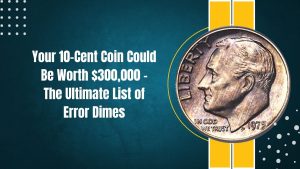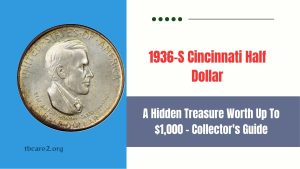While most nickels jingle in our pockets without a second thought, certain rare specimens can be worth thousands of dollars. Identifying these valuable nickels requires a keen eye for specific details and minting anomalies. This article explores three such nickels that could be hiding in plain sight, each potentially fetching up to $10,000 or more.
Contents
1. 1942-D Over Horizontal D Jefferson Nickel
Overview: In 1942, the Denver Mint produced a Jefferson nickel with a unique mint mark error. The “D” mint mark was first punched horizontally and then corrected with a proper vertical punch, creating a distinctive overlapping effect.
Key Features:
- Mint Mark Error: Look for a secondary, horizontal “D” beneath the primary mint mark on the coin’s reverse side.
- Mintage: Approximately 20,000 of these error coins were minted.
- Value: Circulated examples range from $50 to $150. Uncirculated specimens can command between $1,500 and $15,000, with those exhibiting Full Steps details fetching over $30,000.
Identification Tips:
- Magnification: Use a loupe to examine the mint mark closely for signs of doubling.
- Condition Assessment: Coins with minimal wear and clear details are more valuable.
2. 1939 Doubled Monticello Jefferson Nickel
Overview: This nickel features a notable doubling error on the reverse side, particularly affecting the Monticello building and the inscriptions.
Key Features:
- Doubling: Visible doubling on “MONTICELLO” and “FIVE CENTS” on the coin’s reverse.
- Mintage: The exact number is unknown, but these errors are scarce.
- Value: In near-mint condition, these nickels can be worth up to $20,562.
Identification Tips:
- Close Inspection: Examine the reverse inscriptions for clear signs of doubling.
- Professional Grading: Consider having the coin graded to confirm its authenticity and condition.
3. 1943/2-P Overdate Jefferson Nickel
Overview: This overdate error occurred when a 1942 die was repurposed for 1943, resulting in remnants of the original “2” visible beneath the “3” in the date.
Key Features:
- Overdate: The “3” in “1943” shows traces of an underlying “2.”
- Mintage: Limited numbers were produced, making it a rare find.
- Value: High-grade examples have sold for up to $16,675.
Identification Tips:
- Date Examination: Look closely at the date under magnification to spot the overdate anomaly.
- Condition Consideration: Coins with clear overdate features and minimal wear are more valuable.
| Nickel Type | Key Feature | Approximate Value Range |
|---|---|---|
| 1942-D Over Horizontal D Jefferson | Horizontal “D” under mint mark | $50 – $30,000+ |
| 1939 Doubled Monticello Jefferson | Doubling on “MONTICELLO” and “FIVE CENTS” | Up to $20,562 |
| 1943/2-P Overdate Jefferson | Underlying “2” beneath “3” in date | Up to $16,675 |
Discovering a rare nickel in your pocket change is akin to finding hidden treasure. By familiarizing yourself with these key features and diligently inspecting your coins, you might stumble upon a valuable piece of numismatic history. Always consider consulting with a professional coin grader to authenticate and accurately value any potential finds.
FAQs
How can I identify a 1942-D Over Horizontal D Jefferson Nickel?
Examine the reverse side for a secondary, horizontal “D” beneath the primary mint mark.
What is the significance of the “Full Steps” designation?
“Full Steps” refers to the clear visibility of all steps on Monticello’s image, indicating a sharp strike and higher value.
Are these rare nickels still in circulation?
While rare, it’s possible to find them in circulation, especially in bank rolls or old collections.
Should I clean a dirty coin to see its details better?
No, cleaning can reduce a coin’s value. It’s best to have it assessed in its current state.
Where can I sell a rare nickel if I find one?
Consult reputable coin dealers or auction houses specializing in numismatics for appraisal and sale.








I have them all